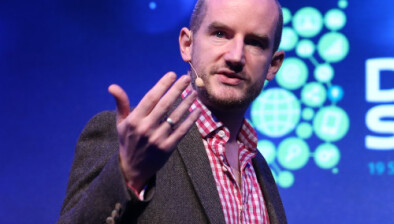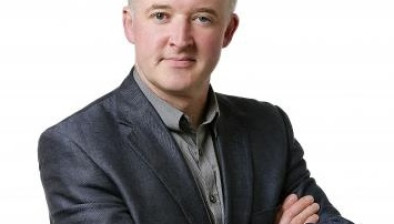Blog: Official Ireland remains in denial about its child abuse legacy

Dr Conor O’Mahony, deputy director of the Child Law Clinic at UCC, writes on Ireland’s continuing failure to protect vulnerable children.
2017 was another bad year in Ireland’s long history of failing to protect vulnerable children. The “Grace” case involved a young woman with intellectual disabilities who was left in the care of a foster family for 20 years despite physical abuse, gross neglect and possible sexual abuse. This led to the publication of two separate reports, the establishment of a Commission of investigation and a settlement of €6.3 million in compensation. The revelations of babies buried in a mass grave in Tuam has been subsumed into a separate Commission of Investigation examining Mother and Baby Homes.
It is only right that significant, if belated, efforts are being made at bringing about justice in these cases. But other worthy victims of Ireland’s systemic failure to protect children are being denied any form of justice.
For decades, the State failed to implement child protection frameworks in national schools. The European Court of Human Rights has already ruled that this was partly to blame for abuse in those schools, but the State continues to fight survivors of abuse tooth and nail.
That ruling occurred in the Louise O’Keeffe case in 2014. Louise was a pupil in Dunderrow National School and was one of 21 girls abused by the school principal, Leo Hickey, on almost 400 occasions in the early 1970s. When a parent complained, Hickey resigned his post and took up another in Ballincollig, where he taught for another twenty years. In February 2017, Hickey was convicted of fresh sex abuse charges in Ballincollig between November 1991 and June 1992.
All of this occurred without so much as an eyebrow being raised in the Department of Education. A guidance note issued by the department instructed schools to direct complaints to school managers – i.e. parish priests – with no department involvement (see para 168 of the judgment). The department had a laissez faire approach to National Schools, with a hands-off inspection regime and a “see no evil, hear no evil” attitude to child abuse.
The risk of such abuse was clear to see. As early as 1931, the Carrigan Report had identified “an alarming amount of sexual crime increasing yearly, a feature of which was the large number of cases of criminal interference with girls and children from 16 years downwards”. On advice from the Department of Justice, the Carrigan Report was never published. The European Court of Human Rights ruled in 2014 that State was or ought to have been aware of the risk of abuse and should have taken reasonable measures to prevent it.
The O’Keeffe judgment ought to have been a watershed moment in which the State’s role in facilitating heinous sex crimes against pupils in national schools was fully acknowledged and accepted. Instead, the State immediately went into damage limitation mode. Taoiseach Enda Kenny’s apology to Louise O’Keeffe pointedly referred to children “in the location where she was”, failing to acknowledge that the judgment concerned a systemic failure to supervise child protection in national schools rather than a specific failure to respond to a complaint in Dunderrow.
This pattern continued when a redress scheme was established for victims of sexual abuse in national schools as part of the State’s implementation of the judgment. The scheme limited redress to those victims who could establish that their abuse had occurred in the aftermath of a prior complaint which had not been acted upon.
First, this distorts the true basis of liability in the O’Keeffe judgment. As the Court observed (at para 168 of its judgment), the State’s obligations were “not fulfilled when the Irish State … continued to entrust the management of the primary education of the vast majority of young Irish children to non-State actors (national schools), without putting in place any mechanism of effective State control against the risks of such abuse occurring”. The emphasis was on risk and the need for preventive measures, not on investigation of actual abuse. To say otherwise is equivalent to saying that a search party is an adequate substitute for a stable door.
The Irish Human Rights and Equality Commission and the Child Law Clinic at UCC have both made submissions to the Council of Europe on this point, and it has been further criticised by the Ombudsman for Children.
Second, the requirement of proving that a prior complaint had been made ignores reality. Although Leo Hickey abused over 20 children, only one of them complained at the time. When his latest victim was asked by defence counsel if he had spent 25 years making up his allegation of abuse, he replied that he had spent 25 years blocking it out.
The fact is that children didn’t complain of abuse. On the rare occasions when they did, how can they prove it decades later? And why is the original complainant, along with any children abused prior to the complaint, any less worthy of redress?
As seen in the State’s latest action plan, only seven compensation payments have been made to date, even though there are 360 known victims.
That Hickey has been convicted of abusing in a separate school highlights – yet again – the effect of the State’s wilful ignorance of matters of child protection in National Schools. The State remains in denial about this, providing token redress while fighting other victims in the courts and threatening to pursue them for costs.
It is long past time for the State to acknowledge its failures in a meaningful way by providing redress to the victims in an inclusive manner. If this does not happen, then it is entirely possible that another Louise O’Keeffe will come along and the State will once more be shamed before the European Court of Human Rights.








